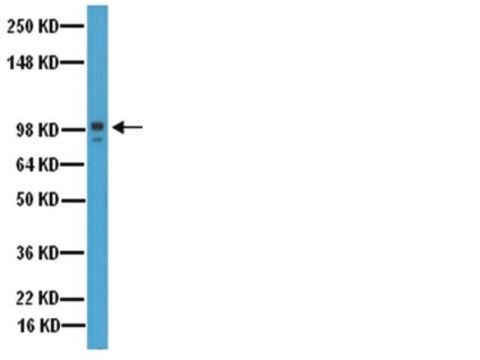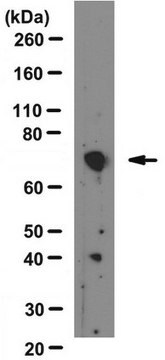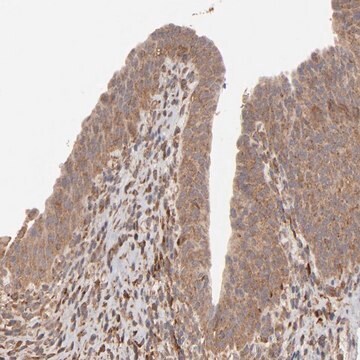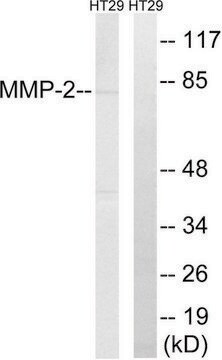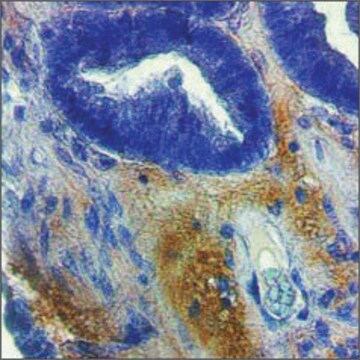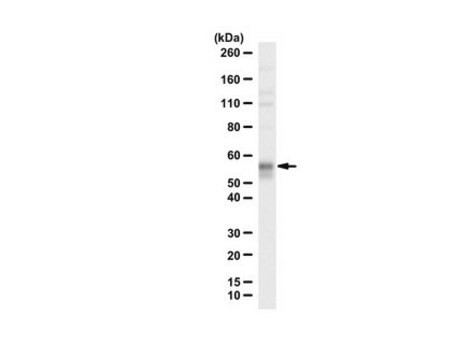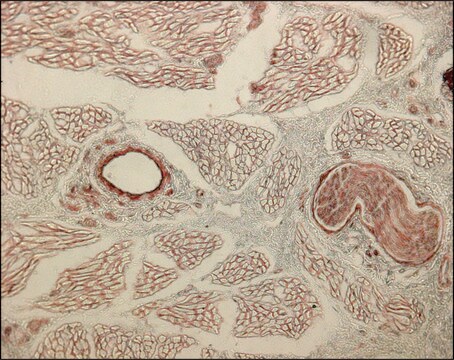AB19015
Anti-MMP-2 Antibody, catalytic domain
Chemicon®, from rabbit
Synonym(s):
Gelatinase A, 72 kDa Type IV Collagenase
About This Item
Recommended Products
biological source
rabbit
Quality Level
antibody form
purified immunoglobulin
antibody product type
primary antibodies
clone
polyclonal
species reactivity
human, mouse, rat
manufacturer/tradename
Chemicon®
technique(s)
immunoprecipitation (IP): suitable
western blot: suitable
NCBI accession no.
UniProt accession no.
shipped in
wet ice
target post-translational modification
unmodified
Gene Information
human ... MMP2(4313)
Specificity
Immunogen
Application
Cell Structure
MMPs & TIMPs
Immunoprecipitation: 1:500
MMP-2 [Gelatinase-A] is constitutively produced in quiescent cells and tissues, and the enzyme has a high specific activity against denatured collagen. The low protein levels produced in cell culture (pg/mL) are often below the threshold of detection by standard Western Blotting. The enzyme can be concentrated from culture media by gelatin-agarose affinity chromatography (Goldberg, 1992) or immunoprecipitation. This can prevent appearance of a spurious band of antibody binding in the vicinity of 68 kDa displayed by some concentrated media.
Optimal working dilutions must be determined by end user.
Linkage
Physical form
Storage and Stability
Other Notes
Legal Information
Disclaimer
Not finding the right product?
Try our Product Selector Tool.
Storage Class Code
10 - Combustible liquids
WGK
WGK 2
Flash Point(F)
Not applicable
Flash Point(C)
Not applicable
Regulatory Listings
Regulatory Listings are mainly provided for chemical products. Only limited information can be provided here for non-chemical products. No entry means none of the components are listed. It is the user’s obligation to ensure the safe and legal use of the product.
JAN Code
AB19015:
Certificates of Analysis (COA)
Search for Certificates of Analysis (COA) by entering the products Lot/Batch Number. Lot and Batch Numbers can be found on a product’s label following the words ‘Lot’ or ‘Batch’.
Already Own This Product?
Find documentation for the products that you have recently purchased in the Document Library.
Our team of scientists has experience in all areas of research including Life Science, Material Science, Chemical Synthesis, Chromatography, Analytical and many others.
Contact Technical Service